Following last week’s blockbuster trade that saw Kasperi Kapanen shipped off to the Pittsburgh Penguins in exchange for a bunch of goodies, it’s clear that the Toronto Maple Leafs are officially open for business. And after an unceremonious qualifying-round loss to the Columbus Blue Jackets, it’s no surprise that general manager Kyle Dubas is looking to shake things up. What may come as a surprise, though, are some of the names being shopped, with goaltender Frederik Andersen headlining a noteworthy list.
Dubas and the front office have been very busy in the two weeks since they were eliminated by Columbus. According to multiple NHL teams, no fewer than four intriguing Leafs are being dangled to varying degrees: Frederik Andersen, Alexander Kerfoot, Pierre Engvall, and Andreas Johnsson.
(from “Mirtle: Kyle Dubas begins Leafs offseason with clean win. And he’s not done yet” – The Athletic – Aug. 25, 2020
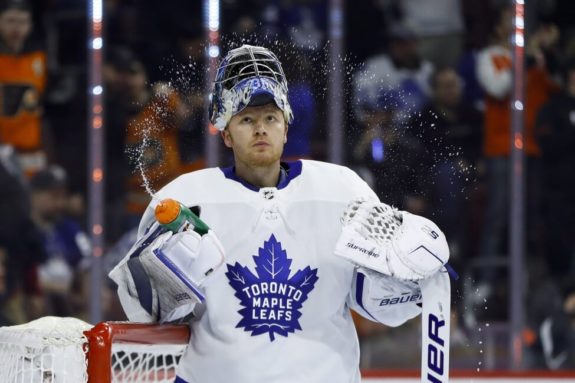
It’s no secret that the 30-year-old netminder had his fair share of struggles this season, posting career-worst marks in both save percentage (.909) and goals against average (2.85). With one more year on his contract, Andersen remains the Maple Leafs’ clear number one option in goal, but it’s evident that the front office is at least considering going another route moving forward.
Related: The Maple Leafs Need More From Frederik Andersen
Let’s explore some of Andersen’s potential replacements — and why the Maple Leafs may be justified in moving on from their starter.
Good Goaltending Often Comes Cheap
It’s actually kind of ironic: the goaltender is arguably the most important position in hockey — the only player that can easily win or lose you any given game. But what we’re finding in the modern NHL is that the most handsomely paid netminders — the ones that are supposed to steal you games — aren’t necessarily the best. This is why we’ve seen the rise of the goalie tandem, and the main reason why the Maple Leafs can confidently move on from Andersen. In short, they can get similar (or possibly even better) goaltending for less money, which in turn will allow them to strengthen the roster elsewhere — namely the blue line.
Related: Maple Leafs Have Multiple Trade Targets on Defense
First, let’s establish the premise that good goaltending doesn’t have to be expensive. I’ll start off simple: ranked by SV%, only three of the top-10 goalies in the NHL this season had a cap hit of over $5 million, with the average salary of the group coming to just $3.36 million. With names like Anton Khudobin, Tristan Jarry, and Pavel Francouz leading the way, most fans would probably be left scratching their heads. Where are all the stars like Carey Price, Marc-Andre Fleury, and Henrik Lundqvist? Let’s get to that.
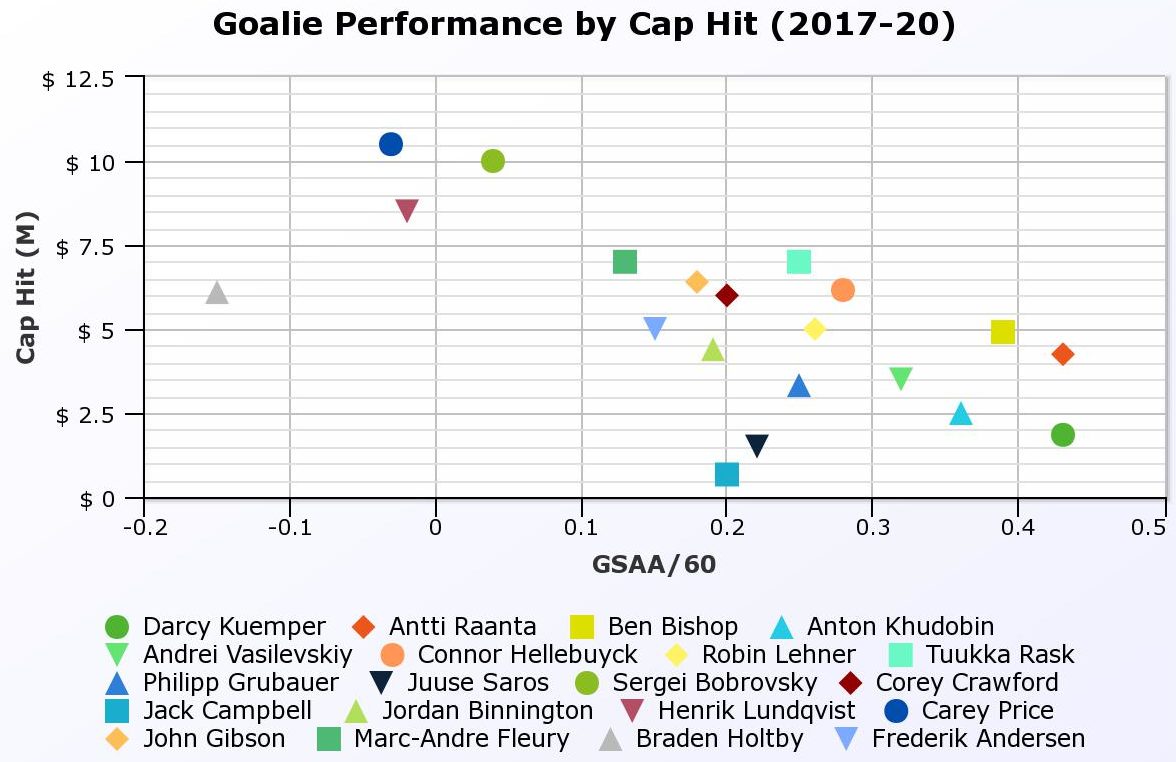
This graphic may be a lot to take in at once, but bear with me. What you’re looking at is goalie performance — measured by goals saved above expected per hour (GSAA/60), which is essentially just a more accurate version of SV% as it adjusts for shot quality — relative to cap hit. The chart includes most of the top performers over the past three seasons, as well as the highest-paid goalies in the league. A quick skim should highlight a couple of interesting patterns.
One, the best goalies over the last three years are not necessarily household names, nor are they paid very much. Darcy Kuemper, Antti Raanta, Ben Bishop, Khudobin, and Andrei Vasilevskiy lead the charge, all earning less than $5 million this season. Vasilevskiy’s cap hit will jump up to $9.5 million next season, and assuming his play remains consistent, he will arguably be the only goalie in the league living up to a monster contract.
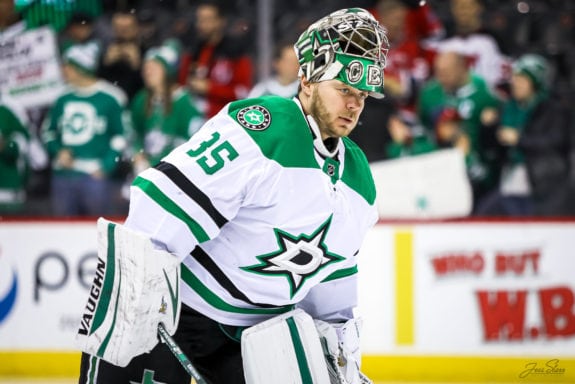
That leads us to the second theme: the highest paid goalies are actually pretty bad, especially when you consider how much they’re making. Price, Lundqvist, and Sergei Bobrovsky — the three richest netminders in the NHL — have all performed right around average over the last three seasons.
I won’t go into the specifics of why or how this is the case (that could be a whole other article unto itself about age curves and the inherent randomness of goaltending), but suffice it to say that good goaltending can be found for very cheap. Look no further than current Maple Leafs backup Jack Campbell, who has actually been a top-15 goaltender in the league for GSAA/60 while making just $675,000. If the coaching staff is comfortable giving Campbell 30-40 games, they can complete the tandem by picking up another relatively cheap goalie to share the load. At the same time, it would free them up to deal Andersen in exchange for assets and some much needed cap space.
Related: Maple Leafs Have Goaltending Options and That’s a Really Good Thing
That said, where should the Maple Leafs look to replace Andersen on the cheap?
This Year’s UFA Goalie Class is Stacked
In terms of both quality and quantity, this year’s free agency class is ripe for choice with goaltenders. Couple that with the COVID-19 pandemic and its effect on the salary cap, and you’ve got a recipe to find excellent goaltending for a reasonable price.
There are some bigger names out there, including Robin Lehner, Braden Holtby, Jacob Markstrom, and Corey Crawford, but they’ll likely command cap hits right around (or above) Andersen’s $5 million. Remember, the goal here is to cut cost and find excess value, so the marquee names are probably out of the question. That brings us to the second tier of unrestricted free agent (UFA) goalies — the lesser known, lesser paid guys.
Anton Khudobin
Dallas Stars netminder Khudobin should arguably be the first name on the Maple Leafs’ wish list. Ranked fourth in GSAA/60 over the last three seasons, the 34-year-old has seemingly come out of nowhere to establish himself as one of the league’s most consistent goalies.
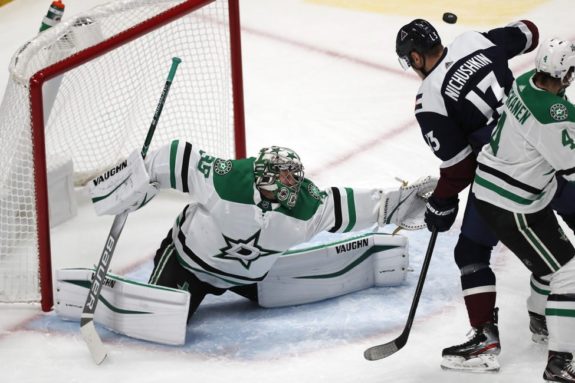
Part of his success is surely down to a manageable workload (the most he’s ever played was 41 games in 2018-19), but that’s kind of the point. If Khudobin and Campbell split the crease for Toronto, they’d actually have one of the strongest statistical tandems in the league.
Khudobin presents an interesting UFA case. He’s currently making $2.5 million and his performance would dictate a raise, but he’s also 34 (that’s getting old in hockey terms!) and due to declining revenues, NHL teams will likely squeeze players more than ever. All of that adds up to what will likely be a one or two-year deal for not much more than his current cap hit. Even if his play slips a bit, the Maple Leafs would likely be getting better goaltending for around half the cost of Andersen.
This is all contingent on him not re-signing with the Stars, of course. Dallas does have several notable players to extend this offseason, including Denis Gurianov and Roope Hintz, but they also have over $18 million in cap space. The Bishop-Khudobin tandem has worked wonders for them, so it does seem likely they’ll do everything in their power to keep it intact. If Khudobin does manage to make it to free agency, though, the Maple Leafs should be all in.
Thomas Greiss
While not quite on the same level as Khudobin, Thomas Greiss provides another great option for the Maple Leafs to target in free agency. The 34-year-old has been with the New York Islanders for the past five seasons, putting up a .915 SV% — right on par with Andersen’s .916 with Toronto.
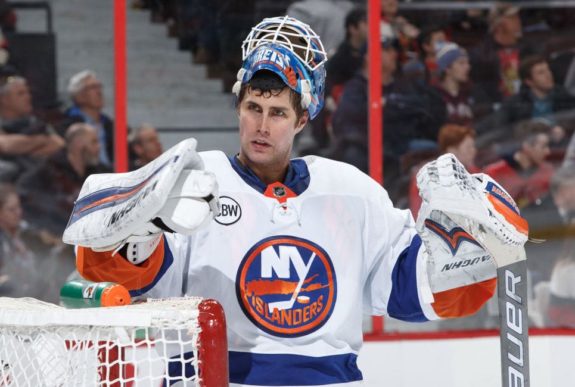
Currently making $3.33 million, the German will probably be looking at a short-term deal at around the same cap hit. The Islanders are also right up against the cap with extensions owed to Mat Barzal, Ryan Pulock, Devon Toews, and others, meaning Greiss will certainly be testing the market come October.
Darcy Kuemper
The Arizona Coyotes netminder is signed for another two seasons at $4.5 million, so he isn’t saving you much money compared to Andersen. He is, however, the NHL’s best goalie by both SV% and GSAA/60 since 2017-18, which is enough to garner some attention.
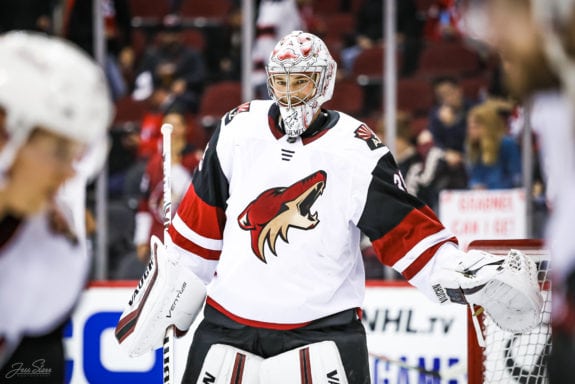
The Coyotes are another team right up against the cap, with rumours swirling about internal salary caps and the desire to cut costs. Raanta (who is just as good as his partner) is already signed at $4.25 million, so they may feel comfortable moving Kuemper to save some money. If Dubas is doing his job, he’ll be checking in constantly in hopes of acquiring the Saskatoon native on the cheap.
While moving on from Andersen is by no means imperative, there is evidence to suggest that a cheaper goaltending tandem may actually be more effective. And given the team’s clear need to improve the blue line, any saved money in net could be directed to bringing in a strong right-handed defender. No matter how you rejig it exactly, it’s evident that some big moves are on the horizon in Toronto.
Player stats from https://www.hockey-reference.com/
Salary cap info from https://www.capfriendly.com/